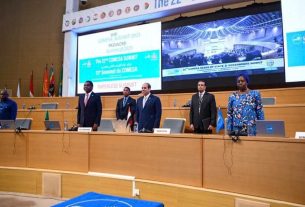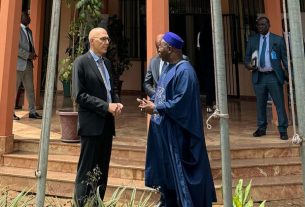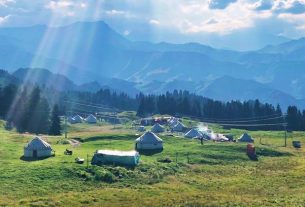By Aymen Sherwani, January 16 2022—
January marks Slavery and Human Trafficking Prevention Month — but what exactly does it look like? When we hear the term “human trafficking” we don’t think of Canada — the first thing that would come to mind would be criminals like Andrew Tate recently getting arrested in Romania after being charged with entrapping multiple women and forcing them to perform sexual acts with the intent to reap “important financial benefits.”
When it is a conversation to be had, however, it’s marred by fear-mongering and sensationalized reports of human-trafficking schemes involving women being kidnapped during broad daylight in grocery store parking lots. That is exactly the problem — we make the mistake of assuming that such a crime would never be occurring within our own borders or discrediting its occurrence with misreporting and gossip. But it does happen, and that same blind eye allows such a grotesque violation of human rights to persist. The reality of the situation is that human trafficking is a lot closer to home than many of us are comfortable admitting.
The Action Coalition on Human Trafficking (ACT) in Alberta — an organization focused on front-line efforts in victim response — reported that “internal trafficking” directly targets vulnerable and impoverished populations residing within a region. Contrary to popular belief, human traffickers don’t simply drive up to someone in the suburbs in a white van with a chloroform rag ready. It is a grooming process that directly targets the desperation of vulnerable people that are at the intersections of houselessness, addiction and poverty and uses such factors against them for material gain.
“Those more likely to be at risk of trafficking include ‘persons who are socially or economically disadvantaged, such as some Aboriginal women, youth and children, migrants and new immigrants, teenage runaways, children who are in protection, as well as girls and women, who may be lured to large urban centres or who move or migrate there voluntarily,’” an excerpt from the federal government’s National Action Plan to Combat Trafficking in Persons reads.
Of the 1,390 Albertan victims supported by ACT Alberta in 2021 alone, 22 per cent of Albertan victims were Indigenous women and girls, with 66 per cent of cases being related to forced labour and sex slavery.
“Traffickers may be intimate partners, employers, recruiters, family members or organized crime groups,” an RCMP threat assessment on human trafficking in Canada reads. “In many cases, convicted traffickers formed bonds with their victims…[who] have been recruited through the Internet or by an acquaintance…often groomed, manipulated, coerced to enter the sex trade.”
Indigenous women and girls in Canada have historically been victimized by the government in a pipeline starting from residential schooling and forced entry into the foster care system to addiction, poverty and trauma. The organization’s coverage of the matter directly contributes to the conversation surrounding missing and murdered Indigenous women and girls (MMIWG) within the country, whose deaths and disappearances are already under-investigated by police and underreported by news outlets in comparison to white victims — so much so that there’s a term for it. Missing White Woman Syndrome, coined by the late-PBS anchor Gwen Fill, describes the mainstream media’s seeming fascination with covering missing White women, and its seeming disinterest in cases involving missing people of colour or vulnerable groups.
What this does is push forward viral, sensationalized stories on social media that go a little something like this story from USA Today:
“A very close friend of mine was out today doing shopping with her child. When she left the store at lady stopped her and made her aware of what was written on her back window (1f1b) I’m just going to assume that it stands for 1 female 1 baby. She was then informed that this is now how sex traffickers are tagging cars … please please mothers, fathers, grand parents..aunts & uncles. Be AWARE! [sic]”
These elaborate schemes that are circulated on social media and news outlets misinform people about the realities of human trafficking. Such news, which is so often at the forefront of internal human trafficking coverage, communicates a Nightcrawler-esque sentiment of “it could be you”— that a person of privilege has something to fear while also being entirely removed from the factors that would lead them down the trafficking pipeline.
Why prioritize viewership, clicks and shares over lives? Canadians forget that it has been nearly 21 years since police raided Robert Pickton’s pig farm and arrested one of Canada’s most prolific serial killers responsible for the murder of 49 women, many of whom were Indigenous, battling with addiction, houselessness and having to resort to sex work on Vancouver’s Downtown Eastside. An area often referred to as the “Low Track,” in the 1990’s the Downtown Eastside was referred to as “Canada’s poorest postal code” and inhabitants were known to be involved with prostitution and drug trafficking — thus reports from residents in the area were either scarce or neglected by law enforcement. Pickton specifically targeted already-stigmatized individuals who the public has a habit of marginalizing and that persists in the demographic trends and patterns surrounding human trafficking collected by ACT in 2021.
“Our first goal is always to get victims and survivors of human trafficking on the path to safety,” a statement reads on the organization’s website. “We also know that we can’t solve this problem alone: we raise public awareness and readiness so that our community can work together to reduce trafficking.”
Visit ACT Alberta’s website to donate to their Survivor’s Fund or to simply learn more about the realities of human trafficking in the province.
This article is a part of our Voices section and does not necessarily reflect the views of the Gauntlet editorial board.



